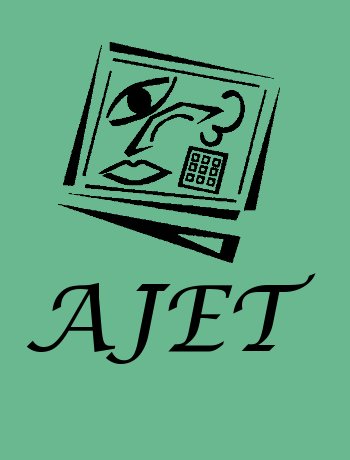
Accommodating culture and cultural diversity in online teaching
ARTICLE
Annegret Goold, Annemieke Craig, Jo Coldwell
Australasian Journal of Educational Technology Volume 23, Number 4, ISSN 0814-673X Publisher: Australasian Society for Computers in Learning in Tertiary Education
Abstract
The term 'culture' has been in common use for a long time. However there is no universally accepted definition and hence it is important to define clearly what culture means in a particular research context. The research reported here is part of a project undertaken at a large Australian university in late 2005. The overall aim of the project was to identify the characteristics of culture and cultural diversity, and to consider how these manifested themselves when teaching and learning in an online environment. This paper reports on particular outcomes from the second stage of the project. This involved conducting focus groups with experienced academics and educational developers of online units. The aim was to gain an understanding of culture and cultural difference in the online environment and to consider what strategies were effective in teaching a culturally diverse cohort of online students. The findings from the focus group sessions were benchmarked with other external faculty. The cultural factors of ethnicity and language, attitudes to educational learning, education and prior learning, learning styles and socio-economic background were well supported by the external faculty. However the factors of religion and gender were not supported. Practices for accommodating such cultural differences amongst students within the online class are presented.
Citation
Goold, A., Craig, A., Coldwell, J. & Coldwell, J. (2007). Accommodating culture and cultural diversity in online teaching. Australasian Journal of Educational Technology, 23(4),. Australasian Society for Computers in Learning in Tertiary Education. Retrieved August 28, 2024 from https://www.learntechlib.org/p/44653/.
References
View References & Citations Map- Barnett, J. (2006). Focus groups tips for beginners. TCALL Occasional Research Paper No.1. Http://www-tcall.tamu.edu/orp/orp1.htm [viewed 2 Aug 2006, verified 2
- Chang, V. & Fisher, D. (2003). The validation and application of a new learning environment instrument for online learning in higher education. In M.S. Khine
- Choi, C.J. & Kelemen, M. (1995). Cultural competences: Managing co-operatively across cultures. Brookfield, VT: Dartmouth Publishing. Australasian Journal of Educational Technology, 2007, 23(4)
- Das, R. (2005). Internationalisation of the curriculum: Putting theory into practice in a physiotherapy program. Journal of University Teaching and Learning Practice, 2(1), 25-35. Http://jutlp.uow.edu.au/2005_v02_i01/das003.html
- Freeman, M., Bell, A., Comerton-Forde, C., Pickering, J. & Blayney, P. (2007). Factors affecting educational innovation within class electronic response systems. Australasian Journal of Educational Technology, 23(2), 149-170.
- Hannon, J. & D’Netto, B. (2007). Cultural diversity online: Student engagement with learning technologies. International Journal of Educational Management, 21(5), 418432.
- Jolley, A. (1997). Exporting education to Asia. Melbourne: Victoria University Press.
- Jones, L. (2005). Maintaining the curricular philosophies of a multicultural education course: From face-to-face to eLearning environments. AACE Journal, 73(1), 91-99.
- Liddicoat, A. (2004). The conceptualisation of the cultural component of language teaching in Australian language-in-education policy. Journal of Multilingual and Multicultural Development, 25(4), 297-317.
- MacKinnon, D. & Manathunga, C. (2003). Going global with assessment: What to do when the dominant culture's literacy drives assessment. Higher Education Research and Development, 22(2), 131-144.
- Maslen, G. & Slattery, L. (1994). Why our universities are failing. Melbourne: Wilkinson Books.
- McLoughlin, C. & Oliver, R. (2000). Designing learning environments for cultural inclusivity: a case study of indigenous online learning, Australian Journal of Educational Technology, 16(1), 58-72.
- Meyers, W., Bennett, S. & Lysaght, P. (2004). Asynchronous communication: Strategies for equitable e-learning. In Beyond the comfort zone: Proceedings ASCILITE 2004. Http://www.ascilite.org.au/conferences/perth04/procs/meyers.html
- Ngeow, K. & Kong, K. (2002). Designing culturally sensitive learning environments. In Winds of change in the sea of learning: Proceedings ASCILITE 2002, Auckland. Http://www.ascilite.org.au/conferences/auckland02/proceedings/papers/055.pdf
- Oxford Reference Online Premium (2007). [viewed 11 Jan 2007] http://www.oxfordreference.com/ Goold, Craig and Coldwell
- Singh, G., O’Donoghue, J. & Worton, H. (2005). A study into the effects of eLearning on higher education. Journal of University Teaching and Learning Practice, 2(1), 1324. Http://jutlp.uow.edu.au/2005_v02_i01/pdf/odonoghue_003.pdf
- Tylor, E.B. (1871). Primitive culture. London: John Murray.
- Williams, R. (1983). Keywords, New York: Oxford UP.
- Williams, T., Long, M., Carpenter, P. & Hayden, M. (1993). Year 12 in the 1980'S. Australian Council for Educational Research, Department of Employment,
These references have been extracted automatically and may have some errors. Signed in users can suggest corrections to these mistakes.
Suggest Corrections to ReferencesCited By
View References & Citations Map-
MOOCs - what’s cultural inclusion got to do with it?
Mauricio Marrone, Lilia Mantai & Karina Luzia, Macquarie University
ASCILITE - Australian Society for Computers in Learning in Tertiary Education Annual Conference 2013 (2013)
These links are based on references which have been extracted automatically and may have some errors. If you see a mistake, please contact info@learntechlib.org.
